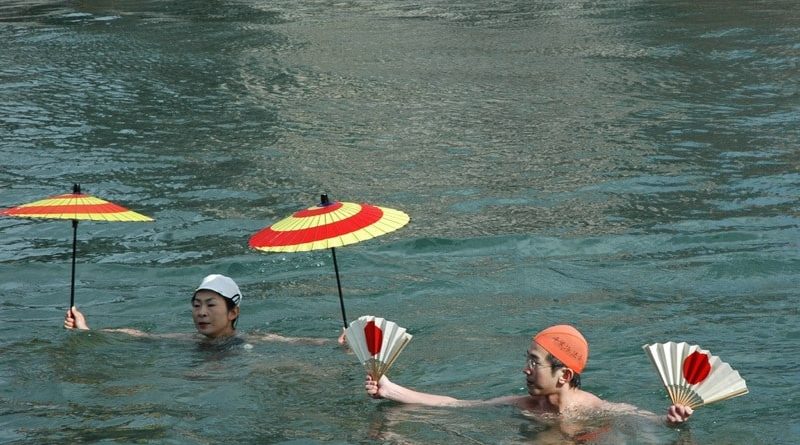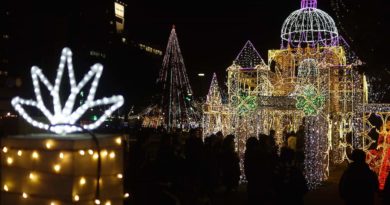Mid-winter swim in front of the A-bomb Dome
Every year on Seijin no hi (Coming Of Age Day), a group of swimmers between the ages of 7 and 70 brave the near freezing water of the Motoyasu River in front of the A-bomb Dome to demonstrate Edo era swimming techniques and welcome the new year.
The Shindenryu Hiroshima Yuuei Doushikai (神伝流広島游泳同志会) keeps alive one of Japan’s 12 traditional swimming styles which apparently date back some 400 years to the Edo period. to demonstrate traditional swimming styles.
According to the 1935 Swimming In Japan
The development of swimming in Japan dates from ancient times. When Izanagi – no- Mikoto bathed in water… From the time of the Gods through the Ancient Times swimming was as natural to the Japanese as walking, because Japan is surrounded by sea, and in all quarters, there are many rivers, streams, lakes, and swamps. Later swimming became a kind of military art, as a means for developing the body and soul and it was also used in time of battle, in river and sea. Even among the peoples, swimming was respected and studied.
As the result of the encouragement given to the study of swimming by the various feudal clans during the Tokugawa Shogunate (1603-1867), swimming as a military art developed. The development of the various schools of military arts swimming was due to the conditions and situations of the rivers, seas, and lakes of the country. In accordance with the topographical differences in various parts of the country, there developed these schools of different types of swimming.
The book explains that the Shinden school is for swimming long distances with the prevailing current, minimizing effort expended by staying afloat using variations on the scissor kick.
Between 11am and 12:30 pm swimmers take the plunge from the riverbank opposite the A-bomb Dome, demonstrating several traditional swimming styles, spinning umbrellas and doing calligraphy. Local swim clubs and even members of the public also get into the spirit by making short (and as fast as possible) 20 meter swims along the riverbank. If you feel like testing your yourself, why not pack your swimmers and go down and ask them if you can join in?
Links
- You can read more about the Hiroshima group (in Japanese) and get contact details if you want to check out their practice sessions at Green Arena here and on their blog here.
- Swimming In Japan (links to PDF files)
- More information on suijutsu here













